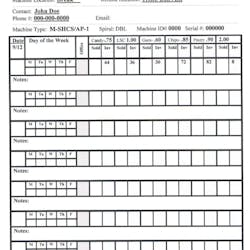All vending companies, large or small, are in business to try and sell as many products as possible at every location. How a company goes about doing this varies greatly. Many use a set plan-o-gram, others allow their drivers to pick whatever they want from the stockroom and a growing number are using their technology to monitor every spiral, check sales and quickly change out non-sellers. However, even if an operator isn't set up to instantly monitor sales, isn't using a hand-held and doesn't have a plan-o-gram, maximizing sales is still possible. To do it, operators need to get the product they want out to their customers by beginning the merchandising process in the stockroom.
Dictate what goes in the machines
We all agree that merchandising is an essential part of buying and selling products, and operators can do it by controlling what they buy and what they allow drivers to take out of the stockroom. Operators should start by setting aside an area in the stockroom where they place the products they want to go into the machines, and then make the drivers only take those products. Operators have an idea of how many spirals in the machines are dedicated to each price point, so place the same amount of products, by price point, in this area. For example, if the machines have 10 spirals for candy products, then place 10 different kinds of candy in this area and no more. This way operators pick which items are to be put into the machines, and when an item is depleted, they pick the replacement, providing a good variety as well as a good average cost per price point. Now the driver can’t just pick what he or she likes or what is the easiest to load.
Rotational items lower price points
Now let’s talk about what goes into a good merchandising program. We all know what the top selling items are nationally, and even if operators don’t, they need look no further than this magazine which publishes a top selling list yearly. For me, the simple rule of thumb was to make sure that 60 percent of all my price points contained the top selling items, which we kept in the machine year round. We used the other 40 percent of the spirals to provide our customers with an ever changing variety which we called our "rotational items." Because the cost of the top sellers are always going to be the highest, we used the rotational items, which we could choose by cost as well as salability, to bring down the average cost of each price point. By merchandising from our stockroom, we were able to control the items that went to our customers, made sure all the machines were filled with the same items, and kept the number of SKU’s we had on hand, at any given time, to a minimum, while controlling the costs of our price points.
If operators are using this approach to merchandising, then there is one more thing that I would advise them to do. Operators shouldn't be afraid to try new items, but they should be careful who they listen to as what may sell for their competitor may not sell for them. Operators should trust their vending instincts as what is best for their customer and don’t allow cost to be the primary reason for a purchase. Remember, operators make money when they sell an item and not when they buy it. If an item costs a penny and sits in the machine, then the operator hasn’t really made any money.
There are going to be locations that will want operators to provide some healthy items in their machines. If an operator gets this call, I would recommend using the NAMA Balance for Life FIT PICK program. It doesn't mean changing the entire machine -- just place the products in 30 percent of all the price points. Do identify them with yellow tabs on the spiral front, place the informational stickers on the front of the machine and educate the customer on the program. I would never go companywide with this, but only to the specific accounts that request it. And even with these items, think merchandising.
Check for visual appeal
Now before I finish, allow me to mention one more thing about the placement of products in machines. This may seem silly to some, but we always looked at fully filled machine to make sure that it had eye appeal. For instance, don’t place all the red colored bags together, don’t put two peanut items together, spread them around to create an eye-appealing rainbow look. I guarantee it will attract a customer’s eye to the machine and make them stop and look, and if they look they are more likely to buy.
Increasing profits is possible for any size operator as long as they choose what goes into the machines, mix best sellers and less expensive rotational items as well as check that products have visual appeal when displayed. It all adds up to successful merchandising.






